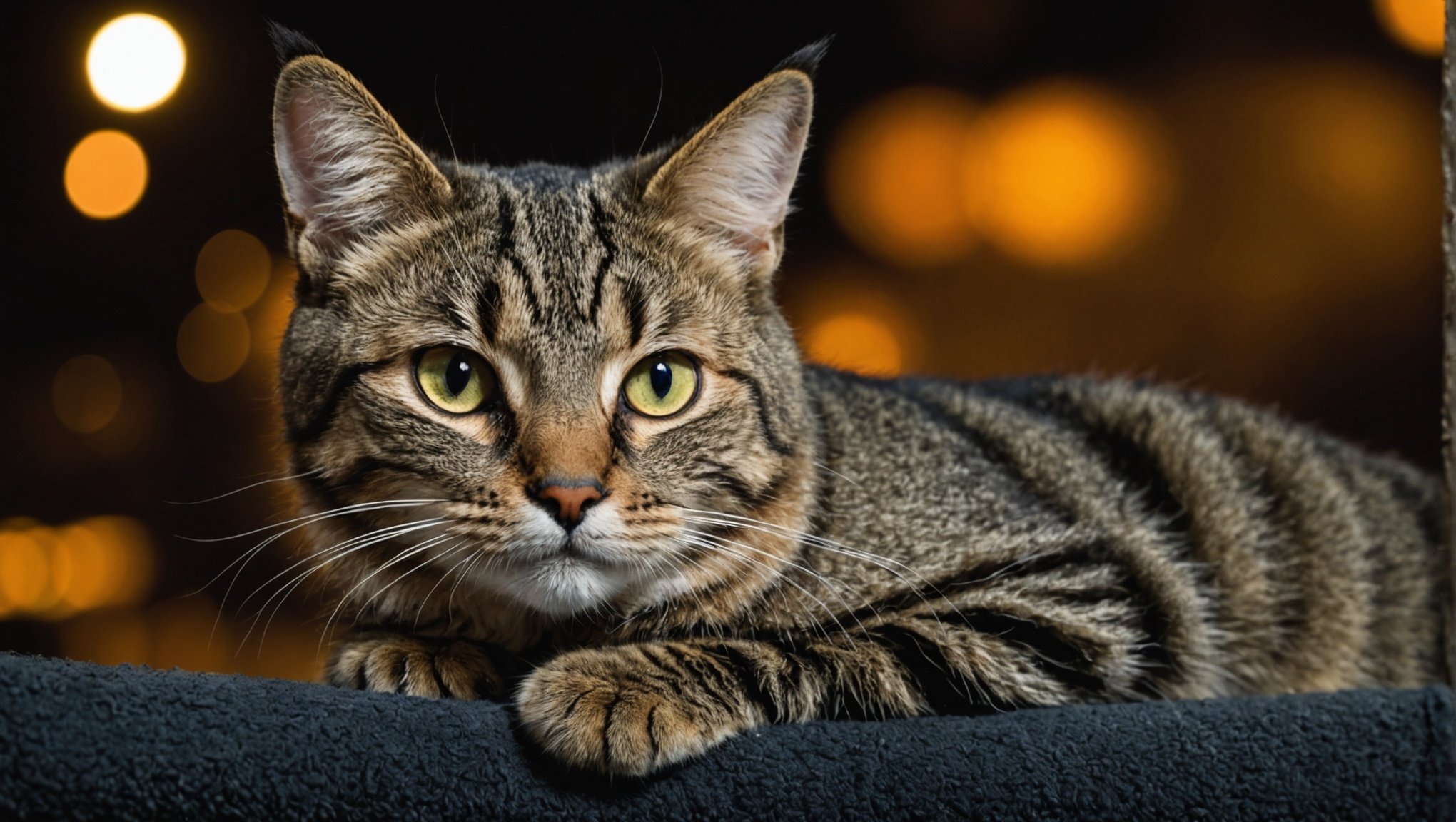As cat owners, it’s quite common to encounter situations where our beloved feline friends exhibit behaviors that are a bit out of sync with our daily routines. Specifically, cats with nocturnal activity patterns can be particularly challenging, as their night-time antics and energy spurts often clash with our need for a good night’s sleep.
Understanding cats and their behaviors, particularly those associated with their sleep and activity patterns, can help us devise effective behavior modification strategies. These strategies can then be used to gently nudge them into a routine that aligns more closely with ours. What follows is an exploration of this topic, with insights and practical tips to help you navigate this terrain with confidence.
Sujet a lire : What are the steps to successfully rehabilitate a cat with a history of hoarding situations?
Understanding Your Cat’s Behavior
Before you can successfully modify your cat’s behavior, you need to understand why your cat behaves the way it does. Cats are, by nature, crepuscular creatures. This means they are most active during the dawn and dusk hours, times when their prey in the wild would also likely be active. However, domestic cats can alter this pattern and lean towards being more nocturnal, especially when they are not properly socialized or stimulated during the day.
As a result, your cat’s night-time activity is not a sign of misbehavior or defiance. Rather, it’s a natural instinct that has been misdirected due to a lack of appropriate outlets during the day. Recognizing this can help remove any blame or frustration you might feel, and pave the way for a more empathetic and effective behavior modification approach.
A lire en complément : What are the best ways to enrich the living space for a cat confined indoors due to FIV or FeLV?
Assessing Your Cat’s Current Routine
The first step in behavior modification is to conduct an assessment of your cat’s current routine. This will help you identify patterns, triggers, and potential areas for intervention. For instance, if your cat primarily eats and sleeps during the day, it will likely be more active at night.
Start by observing your cat for a few days. Note down when they eat, sleep, play, and carry out other activities. Also, pay attention to their behavior just before and after these activities. This context will help you understand their motivation and give you valuable insights into how you can gently shift their routine to align with yours.
Modifying Your Cat’s Behavior Through Food and Activity Manipulation
Modifying your cat’s behavior will involve gradual changes to their routine, primarily focused around food and activity manipulation. The idea here is to keep your cat active and engaged during the day, ensuring they get enough physical and mental stimulation to tire them out by nightfall.
You can start by offering food at specific times of the day and gradually shifting these times to align with your schedule. Cats are driven by food, so this can be a powerful motivator for change. However, ensure this is done slowly and carefully to avoid causing distress or anxiety in your cat.
In addition to food, increasing your cat’s daytime activities can also help. Regular play sessions using toys that mimic prey, like feathers on a string or laser pointers, can stimulate your cat’s hunting instincts and expend their energy.
Employing Environmental Enrichment and Positive Reinforcement Techniques
Another effective way to modify your cat’s behavior is through environmental enrichment. This involves creating an environment that stimulates your cat’s natural behaviors like hunting, climbing, and exploring. This can be achieved by providing scratching posts, climbing trees, interactive toys, and even puzzle feeders that make your cat work for their food.
Positive reinforcement is also a key part of any behavior modification strategy. Reward your cat for displaying desired behaviors at the appropriate times. This could be with treats, praise, or extra playtime. Over time, your cat will associate these behaviors with positive outcomes, reinforcing the behavior and making it more likely to occur in the future.
Managing Night-time Disturbances
Despite your best efforts, there may be times when your cat still insists on being active at night. Instead of punishing your cat, consider using “booby traps” to deter unwanted behaviors. For instance, if your cat enjoys knocking items off your nightstand, you can place aluminum foil or sticky tape on the surface. Cats dislike the feel and sound of these materials, so they’ll likely avoid the area in the future.
Remember, consistency and patience are key when it comes to behavior modification in cats. It’s a gradual process, and each small step brings you closer to a harmonious household where both you and your cat can thrive.
Professional Assistance and Necessary Precautions
In some cases, your cat’s nocturnal activity might be due to underlying health or behavioral issues that require professional intervention. It’s always advisable to consult with your vet if you notice sudden changes in your pet’s sleep patterns or behavior, especially if accompanied by other signs of distress like lack of appetite, lethargy, or aggression.
In fact, even before you begin any behavior modification plan, it would be wise to have a chat with your vet. They can provide personalized advice based on your cat’s age, health condition, and personality. For instance, older cats, kittens, and cats with health conditions may have different sleep requirements and activity levels.
Moreover, you should be careful while interacting with unsocialized cats or feral cats. While it’s possible to modify the behavior of such cats, you need to approach them with caution. Unlike socialized cats, feral cats have not been exposed to humans from a young age and can be unpredictable and even dangerous. If you’re dealing with a feral cat, consider seeking help from a professional who’s experienced in cat training.
Lastly, never resort to punishment as a means of behavior modification. Cats do not respond well to punishment and it can even lead to more behavioral problems. Always stick to positive reinforcement techniques, and consult a professional if you’re unsure about the best approach for your cat.
Conclusion: The Path to A Harmonious Household
Modifying the behavior of your cat to align with your schedule is not an overnight task. It involves a deep understanding of cat behavior, careful assessment of your cat’s current routine, gradual manipulation of their food and activity schedules, and the employment of environmental enrichment and positive reinforcement techniques. In some cases, it might also involve seeking professional assistance.
Remember, the goal is not to completely alter your cat’s natural habits, but to guide them towards a routine that respects both their needs and yours. Cats are adaptable creatures, and with consistency, patience, and empathy, you can create a harmonious environment where both you and your cat can thrive.
The journey towards a peaceful night’s sleep might be challenging, but it’s also an opportunity to bond with your pet and understand them better. So, embrace the process and remember that every small victory is a step towards a better understanding and stronger relationship with your cat. After all, it’s these challenges and solutions we navigate together that truly define our companionship with these beautiful, loving creatures.
















